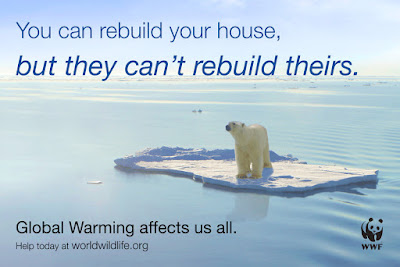Tragedy in the Tundra;
a comprehensive analysis of what factors led to the alarming decline in Polar Bear populations within recent years, and what must be done in order to facilitate a sustainable recovery of the species.

image courtesy of: https://uhsanimalsavers.files.wordpress.com/2012/09/10224221c-3_e589afe69cac.jpg

Ecology of the Polar Bear
Native to the frigid climate and ice infested waters that encompass the northern hemisphere, specifically in parts of Canada, Denmark, Norway, Russia, and the United States; polar bears are the physically largest members of the bear family. Similar to the Grizzly, who polar bears actually evolved from originally, they are textbook carnivores and feed primarily on several different kinds of seal. The species is often labeled to have a low reproductive rate because of the combination of factors including their late age at sexual maturity (females typically around 4-5 years of age) , minimal litter sizes (generally only two cubs), and the level of extended parent supervision over their young.
Geographic & Population Changes
According to reports released by the US Fish and Wildlife Service, the current global Polar Bear population is somewhere between 20,000 to 25,000 individuals ranging across the five Arctic Nations. In the last several decades, there has been significant fluctuation in the data regarding geographic and population tendencies of the Polar Bear. However, it is difficult to draw conclusions from these changes in data that is applicable to the entire species. Most published reports focus only on variations occurring within a single sub population of the 19 various populations in existence.
Date and type of listing received
Polar Bears were first classified as a 'threatened' species on May 15, 2008.
Main Threats / Factors that caused the listing
The overbearing threat to the survival and recovery of Polar Bears is the drastic, rapid degradation of the ice caps they use as a habitat, which is a product of Arctic warming. This means that the primary threat to Polar Bear survival is whether or not decisive action can be taken against the increasing concentrations of greenhouse gasses being released into the atmosphere. Experts in the field agree that if this is not accomplished in the relatively near future, the Polar Bears will have almost no chance of survival.
Description of Recovery Plan
The foundation of the recovery strategy drafted for the species is a fierce opposition effort to Arctic Warming and relies on decisive action to facilitate massive reductions in the amount of greenhouse gas being emitted into the atmosphere. Apart from this, the USFWS Conservation Strategy also touches on several other areas for conservation management which include actions like monitoring and limiting human-bear conflicts, subsistence harvest, guarding the diminishing environment, and protection from contamination of waste or oil spills. These efforts are all important to stay vigillant about so that if/when effective climate reform is accomplished, the species will have optimal chance for recovery.
What you can do
- Make changes in your daily life that reduce your carbon footprint (bike to work instead of driving, don't idle, etc)
- Research and Educate others about the issue
- Donate to conservation efforts
- Advocate for legislation regarding carbon emissions





It's sad how much irreversible damage humans have done to the polar bears' environment, thanks for sharing the many options we have to help this species thrive. It would be interesting to learn more about what legislation options there are regarding carbon emissions.
ReplyDelete-Christina Cazares